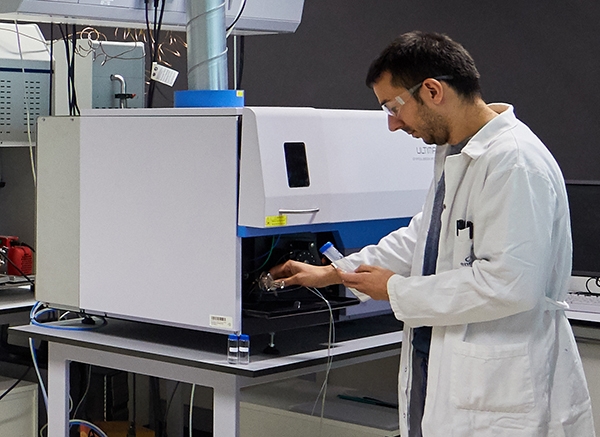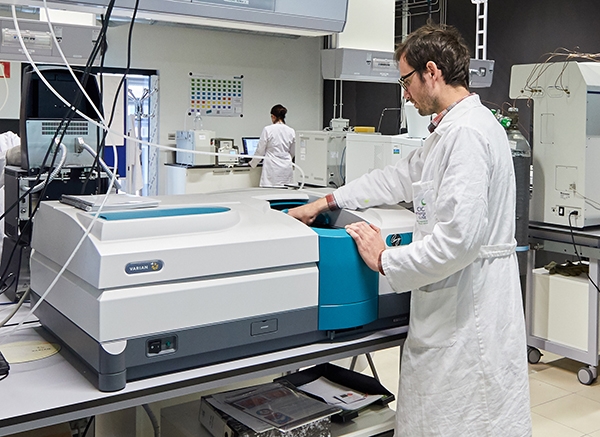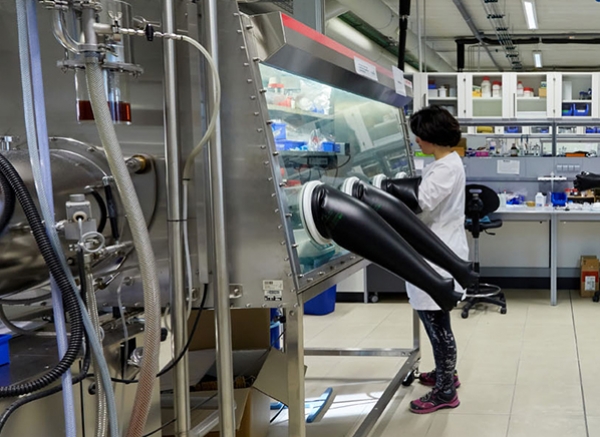In addition to large equipment, CIC energiGUNE provides additional apparatus and techniques for the suitable handling of materials and their physicochemical characterization.

A suitable characterization of the materials porosity is a crucial factor to understand and enhance their performance in a wide range of applications. Regarding energy storage, the electrochemical ion insertion and the diffusion of electrolytes/reactants towards the pores/interstices of the electrodes determines the efficiency and the cycle of life of a battery. At CIC energiGUNE we have a set of equipment enabling the full characterization of the porosity in solid materials.
ASAP 2460 and ASAP 2020 volumetric gas adsorption analyzers (Micromeritics): Acquisition of high-quality N2 adsorption-desorption isotherms for the characterization of both micro (0.5-2 nm) and mesopores (2-30 nm) in solid materials. ASAP 2020 is also equipped with i) two high-vacuum degassing ports (10-4 mmHg, ≤ 450 ºC) and ii) a CO2 adsorption module to study the ultramicroporosity (pores <0.8 nm). The isotherm data is analyzed with MicroActive Software which provides many gas adsorption models to calculate BET and Langmuir surface area or t-plot, BJH, Horvath-Kawazoe, DFT and Dubinin reports.
VacPrep 061 degasser (Micromeritics): Enables to degass solid samples either by vaccum (10-2 mmHg) or gas flow (N2, up to 50 cm3 min-1) up to 400 ºC.
Accupyc II 1340 pycnometer (Micromeritics): Determines density and volume by using the gas displacement method and measuring the pressure change of helium within calibrated volumes. Gas pycnometry is recognized as one of the most reliable techniques for obtaining true, absolute, skeletal, and apparent volume and density.

Infrared spectroscopy (IR) is a powerful technique to determine chemical structures and identify the presence of functional groups on inorganic/organic compounds containing covalent bonds. Hence, this technique provides understanding on how materials or their surface can affect to their performance.
The IR instrument available at CIC energiGUNE has an attenuated total reflection (ATR) accessory which enables the examination of solid and liquid samples without any further preparation. As well, the Fourier transform infrared spectroscopy (FTIR) provides fast acquisition times, high-resolution spectra and high sensitivity.

Sequential spectrometer with optimum sensitivity for the analysis of a large variety of samples and matrices deriving from mining, chemicals manufacture, salt production, oils, petrochemistry, metallurgy and precious metal refining. This equipment enables to study the degradation of electrodes and the detection of trace metals in both aqueous and organic media. Regarding synthetic samples, it is also possible to confirm the final composition of lab-prepared materials.

The Cary 5000 is a high performance Ultravisible-Visible-Near-infrared (UV-Vis-NIR) spectrophotometer with superb photometric performance in the 175-3300 nm range. Using a PbSmart detector, the Cary 5000 extends its NIR range to 3300 nm making it a powerful tool for materials science research.
It is controlled by the Cary WinUV, a modular Windows-based software which facilitates the analysis and the control of a number of optional accessories. The large sample compartment can be expanded to hold large accessories and integrate spheres for spectral and diffuse reflectance. The LockDown mechanism enables the fast changing and positioning of accessories for the obtaining of reproducible results.
The system can analyze a wide range of samples including liquids, suspensions, solids and films. Sample sizes can vary from 140 mm to as small as 1mm while acquisition areas can be modified from 10 to 1mm in diameter.
Some common applications are:

CIC energiGUNE has three glove boxes with 4 common workstations (2.40 x 1.30 m), and three independent dry boxes (1.80 m) with a work station each.
These Glove boxes are prepared to perform basic synthesis operations and assemble electrochemical cells requiring inert conditions (low content of O2 and H2O). Inside the glove boxes there are a wide range of reagents and solvents to be used for those type of syntheses. As well, basic equipment such as hotplate, balance, stirrer, centrifuge, vacuum oven, high-temperature oven, vacuum sealer, coin cell crimper/disassembler, Karl-Fischer coulometer, spin coater, FTIR, film coater, spin coater, hydraulic press and vacuum filtration is also available among others.

If you want to know the latest trends in energy storage and new developments in research, subscribe.

If you want to join a top-level team, collaborate with specialists in multiple disciplines or tell us about your concerns, don't think twice...